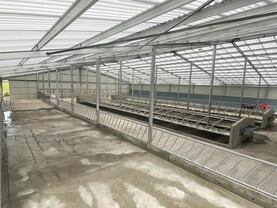Labour is a key topic on dairy farms in recent years, with a perceived shortage of staff and an ever-growing workload. Solving the labour issue, is a bit like eating an elephant, you tackle it one piece at a time.
Managing labour was the central theme of the Aurivo/Teagasc/IFAC labour workshop held on Malcolm Cooper’s dairy farm at Castlefin, Co Donegal last week. The 80 strong crowd found that labour is about much more than just managing other people. To begin to tackle the labour issue is to take the first bite of the elephant – to look at yourself.
“You are the centre-point of your business,” according to labour consultant Nollaig Heffernan. “The people in your business look to you for the decisions, your reactions, your mood and your response under pressure are noted by your family and if you have them, your employees,” she said.
With this in mind several elements of labour were covered on the day; farmyard layout, labour-saving tips, organising your time, employee legislation and people management. Each component related to streamlining all aspects of the business from the cow flow into the milking parlour to the setup of contracts for employees.
Malcolm Cooper and his family are running a 200 cow dairy operation with youngstock being contract-reared on a nearby farm. There is a full-time person and part-time labour involved throughout the year for various jobs. Contractors are used more now as the business has expanded in recent years.
Malcolm’s mantra is to enjoy farming and take pleasure from getting out to the farm each day. On a typical day, Malcolm milks in the morning while being able to use the main part of the day for daily jobs and the afternoon for planning and paperwork with an employee milking in the evening.
Farm systems
Malcolm’s farmyard layout was analysed and key areas were identified that could add extra work to the day. Pat Clarke, Teagasc dairy specialist for the region measured the width of the entrance into the collecting yard and how a narrow entrance slows down cow flow and therefore slows down milking time. He said that the process of milking makes up about one third of the total annual workload so small time savings here add up to big time savings over a year.
He said cows need between 1.2 and 1.5m² per cow in the collecting yard to keep cows flowing into the parlour themselves. Local Teagasc advisor Shane McHugh said that many farmers are getting up and down from the pit to bring cows into the parlour which dramatically slows down milking time.
Workers v managers
“Are you a worker or a manager of your farm business?” Nollaig Heffernan asked. “As your farms have expanded and grown, you move into middle management because you are making the higher level tactical decisions for your business and they require more attention”.
Nollaig went through the planning and prioritisation of tasks in the year. “Calving, breeding, drying-off and staff holidays should be slotted into your calendar at the start of each year, this way you can plan in advance. Plan around them, plan before them and plan for after them.”
Discussion arose about how busy every day can be when the weather is poor and particularly in split-calving herds. Nollaig said in these circumstances you need to list out all the jobs that need to be done and then prioritise the important ones or the most urgent jobs.
“You may need to live with the fact that you will only get these three tasks done that day, but you will know they were the most important and most urgent,” Nollaig said.
At the IFAC stand, local manager Joe Lambe highlighted the importance of having wage slips, hours worked and contract of employment in order when taking on employees. “A simple method of recording might be your diary. This way you have the date and the hours together,” he said.
One of the common pitfalls highlighted by Joe was that people often assume the employee will look after their own tax. He said that a gross wage should be agreed and from this the onus is on the employer to arrange for PAYE and PRSI to be paid.






 This is a subscriber-only article
This is a subscriber-only article










SHARING OPTIONS: